DSAT MATH
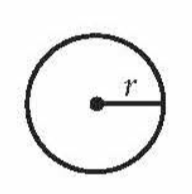
Area of a Circle
πr2

Circumference of a Circle
2πr
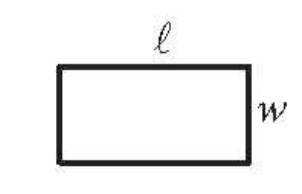
Area of a Rectangle
lw
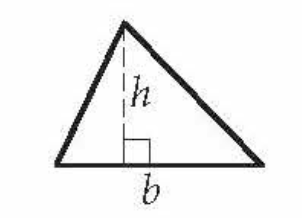
Area of a Triangle
(1/2)bh

Pythagorean Theorem
c2=a2+b2
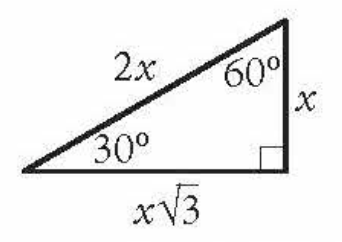
Special Right Triangle
Across from 30 - x
Across from 60 - x√3
Across from 90 - 2x
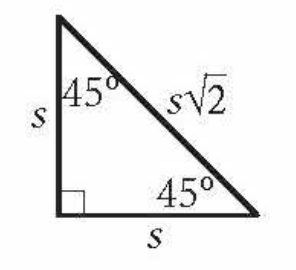
Special Right Triangle
Across from 45 - s
Across from 90 - s√2
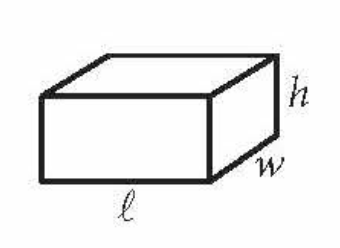
Volume of a Rectangular Prism
lwh
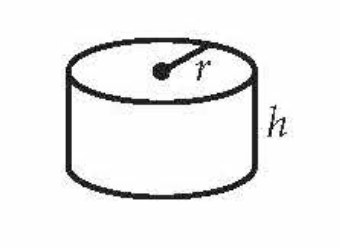
Volume of a Cylinder
πr2h
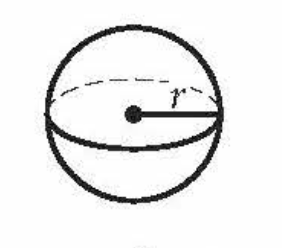
Volume of a Sphere
(4/3)πr3
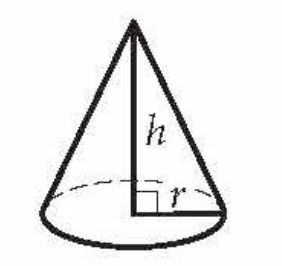
Volume of a Cone
(1/3)πr2h
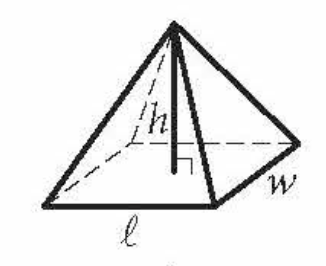
Volume of a Pyramid
(1/3)lwh
The number of degrees of arc in a circle
360.
The number of radians of arc in a circle
2π
The sum of the measures in degrees of the angles of a triangle
180

Kite
two disjoint pairs of consecutive congruent sides
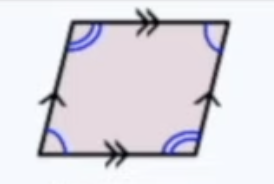
Parallelogram
two pairs of parallel sides
- opposite angles are congruent

Trapezoid
only one pair of parallel sides
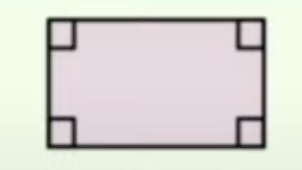
Rectangle
four right angles
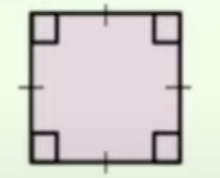
Square
four congruent sides and four right angles
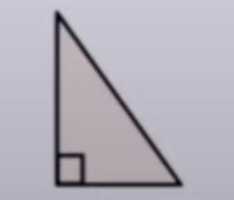
Right Triangle
one right angle
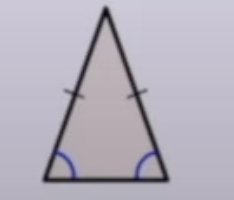
Isosceles Triangle
at least two congruent sides
- opposite angles of the congruent sides are congruent
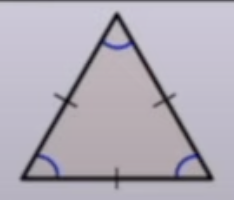
Equilateral Triangle
three congruent sides
- all three angles are congruent (and = 60 degrees)
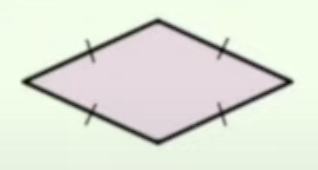
Rhombus
four congruent sides
- opposite angles are congruent
Volume of Prisms
(area of the base)(height)
Surface Area of Prism
area of every single face
- (perimeter of base)h + 2(area of base)
- or calculate area of each face and add
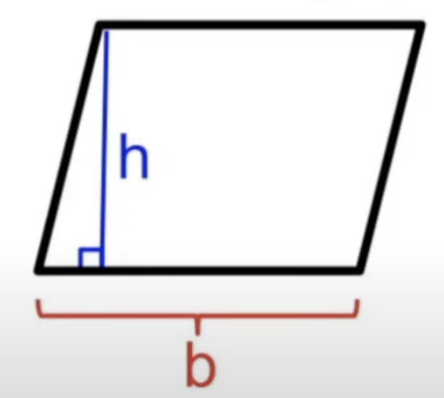
Area of Parallelogram
b(h)
- or, can break up into two triangles and a rectangle, solve that way
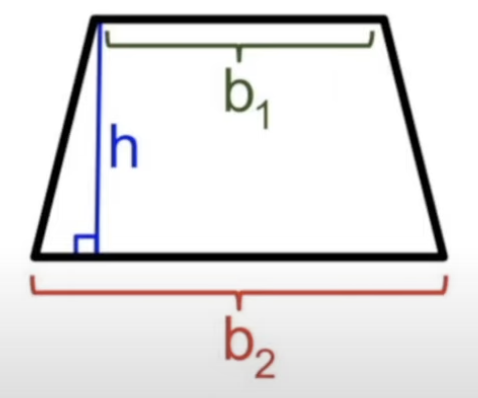
Area of Trapezoid
[(b1+b2)/2](height)
- or, can break up into two triangles and a rectangle, solve that way
What does it mean if two shapes are congruent?
They are identical
- same side lengths
- same angle measures
What does it mean if two shapes are similar?
They are proportionate (same shape, but one is bigger or smaller)
- sides are proportionate
- angles are congruent
Conditions sufficient to prove that triangles are congruent
SSS - all sides are congruent
SAS - two sides congruent, angle nestled in between those two sides congruent
ASA - two angles congruent, side nestled in between those angles congruent
AAS - two angles and side congruent (congruent side is opposite the same angle in both triangles)
HL - both right triangles, hypotenuse and leg line up
Conditions sufficient to prove that triangles are similar
AA - two angles are congruent
SAS - two angles are congruent, sides on the outside are proportionate
SSS - all three sides have same proportion
Sum of the Interior Angles of Polygons
(n-2)180
n = number of sides
Sum of the measures of angles in a quadrilateral
360
Sum of the exterior angles of a Polygon
always 360
Degrees to Radians Conversion
180/π
Complementary Angles
x + y = 90
two angles add up to 90 degrees
Supplementary Angles
w + z = 180
two angles add up to 180 degrees
Two Lines are Parallel, Transversal (line drawn through them)
Certain angle relationships emerge
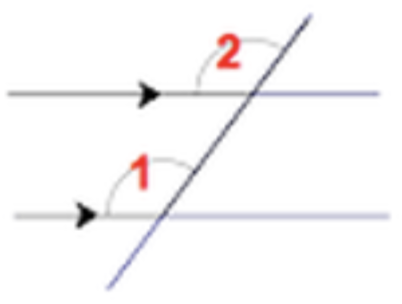
Corresponding Angles (congruent)
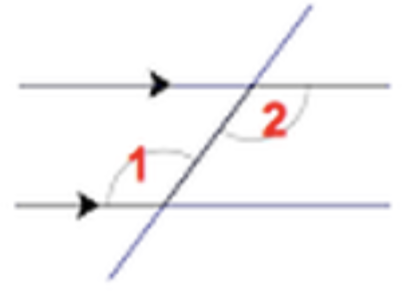
Alternate Interior Angles (congruent)
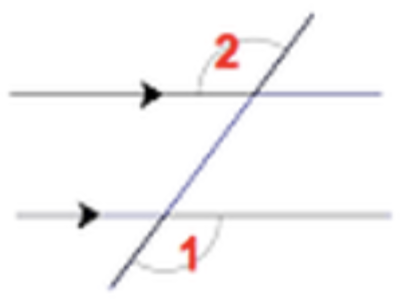
Alternate Exterior Angles (congruent)

Vertical Angles (congruent)
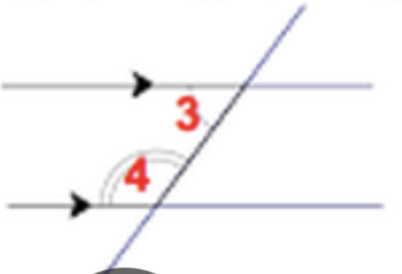
Consecutive Interior Angles
- add to 180

Consecutive Exterior Angles
- add to 180

Linear Pair
- add to 180
Sine of an angle
Opposite/Hypotenuse
- never greater than 1 or less than -1
Cosine of an angle
Adjacent/Hypotenuse
- never greater than 1 or less than -1
Tangent of an angle
Opposite/Adjacent
sin(x)=
cos(90-x)
cosine of the complement
Quadrant 1
0<angle<90
0<angle<(π/2)
- everything is positive
Quadrant 2
90<angle<180
(π/2)<angle<(π)
- only sine is positive
Quadrant 3
180<angle<270
(π)<angle<(3π/2)
- only tangent is positive
Quadrant 4
270<angle<360
(3π/2)<angle<(2π)
- only cosine is positive
Unit Circle (Q1)
sin(angle) = y
cos(angle)= x
tan(angle) = y/x
30 degrees, (π/6) - (√3/2 , 1/2)
45 degrees, (π/4) - (√2/2, √2/2)
60 degrees, (π/3)- (1/2, √3/2)
Arc Length
(n/360)(2πr)
or (radius)(central angle in radians)
Area of a Sector
(n/360)(πr2)
or (1/2)(angle in radians)r2
Arc Measure
can be in degrees or radians
equivalent to central angle
double the inscribed angle (or arc length is half of inscribed angle)
Circle Equation
(x-h)2 + (y-k)2= r2
(h,k) = center
r = radius
Completing the Square
c=(b/2)2
Equations with one solution
simplify to x=a
Equations with no solutions
a=b
Equations with infinitely many solutions
x=x
slope
(y2-y1)/(x2-x1)
parallel lines have
same slope
perpendicular lines have
opposite reciprocal slopes
Equations with DIFFERENT slopes (m-values)
the system has one solution
Equations with SAME slope (m-value) but DIFFERENT y-intercepts (b-value)
the system has no solutions
Equations with same slope and y-intercept (m and b values)
the system has infinitely many solutions
More than c, greater than c, OR higher than c
>c
Less than c OR lower than c
<c
greater than or equal to c OR at least c
- no less than c
≥c
less than or equal to c OR at most c
- no more than c
≤c
least, lowest, or minimum value
the lowest value that satisfies the inequality
greatest, highest, or maximum value
the largest value that satisfies the inequality
a possible value
any value that satisfies the inequality
distance=
(rate)(time)
percent
parts per hundred
p%={p}/{100}
what means
x
is means
=
of means
multiplied by
percent means
divided by 100
the sum of all parts of a whole is
100%
Percent Change
(final - initial/initial)x 100
Compounding Annually - Formula
exponential growth
A=P(1±r)t
Compounding Non-Annually - Formula
exponential growth
A=P(1±r/n)nt
Simple Interest
A=Prt
Distance Formula
√(x2-x1)2+(y2-y1)2
Midpoint Formula
((x1+x2)/2),((y1+y2)/2)
Vertex of a Parabola (in standard form)
-b/2a
Students Selected at Random
Subjects Randomly Assigned to Treatments
- results can be generalized to the entire population
- conclusions about cause and effect can appropriately be drawn
Students Selected at Random
Subjects not Randomly Assigned to Treatments
- results can be generalized to the entire population
- conclusions about cause and effect should not be drawn
Students Not Selected at Random
Subjects Randomly Assigned to Treatments
- results cannot be generalized to entire population
- conclusions about cause and effect can appropriately be drawn
Students Not Selected at Random
Subjects Not Randomly Assigned to Treatments
- results cannot be generalized to the entire population
- conclusions about cause and effect should not be drawn
Percentage Increase
new/original = ( 100 + % ) / 100
shortcut: find x% of the value and add it to x
1.(percent as a decimal)x or x((percent as decimal) + 1)
Percentage Decrease
new/original = ( 100 - % ) / 100
shortcut: x((percent as decimal) - 1)
Proportionality in Circle
arc length/circumference = central angle/360 degrees = area of a sector/area of a circle
Complementary Property of Trig Ratios
sin(x)=cos(90-x)
cos(x)=sin(90-x)